Each of the six million Jews who were killed in the Holocaust had a story. Before they were victims, they were shopkeepers, business owners, students, and more. While their voices were silenced, the photos and artifacts that they left behind allow us to reflect on the lessons their experiences teach us. Their legacies remind us about the dangers of hate and indifference and the importance of solidarity and courage in moments of crisis.
This small collection of photos from our archives feature individuals and their stories that bear witness to Holocaust memory.
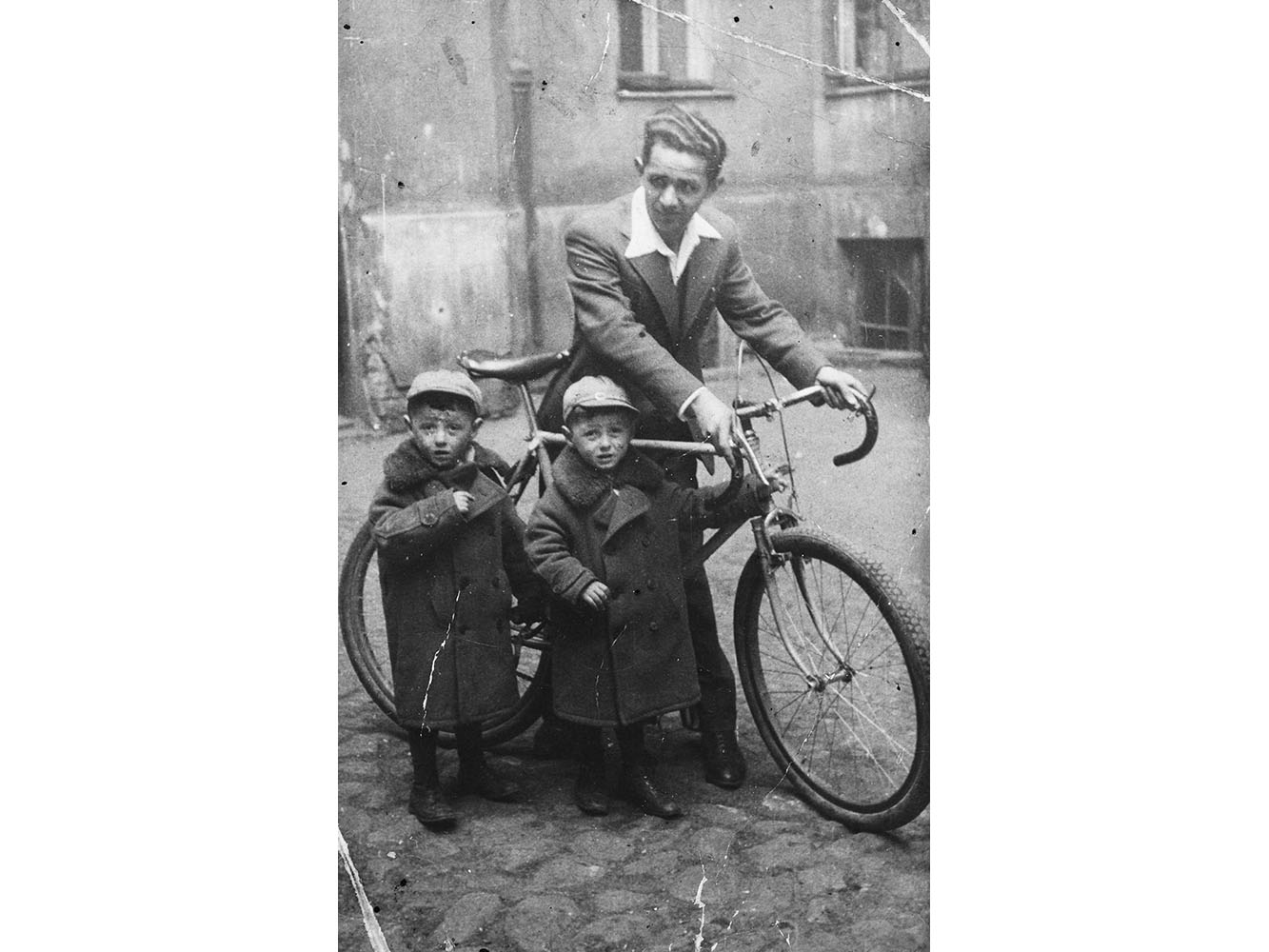
Polish Jew Eli Warszawczyk stands next to his twin boys, Froyke and Nechomke, in the 1930s. This young family died during the Holocaust. While we don’t know many details about their lives, we know what happened to Eli’s nephew, Larry Warick, who donated this photo to the Museum in memory of his family members whom he never got to know. Larry was younger than five years old when he lived in Warsaw during the war. In 1940, Larry, along with his mother and father, escaped from the Warsaw ghetto to Soviet-controlled Bialystok where they were then deported to a Soviet Siberian labor camp near the Arctic Circle.
The family was later relocated to Kutaisi in Soviet Georgia where they lived from 1941–44. After the war, they returned to Poland, where they discovered their relatives, including one uncle who had fought in the Warsaw Ghetto Uprising, had died. Larry and his parents immigrated to New York in 1949. US Holocaust Memorial Museum, courtesy of Larry Warick
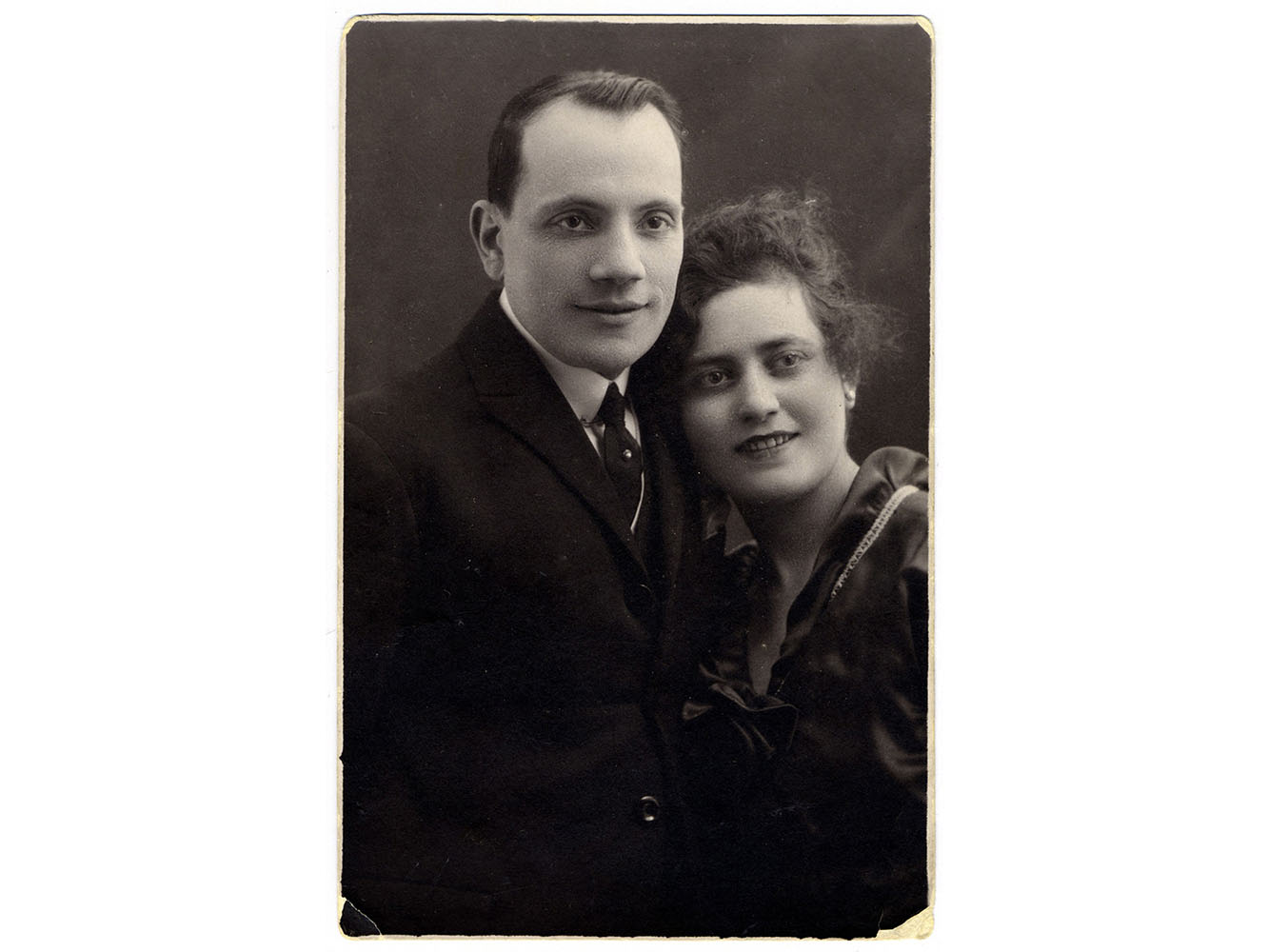
Maurice Flake, a Parisian shoemaker and shop owner, and his wife, Gabrielle, pose for a picture in the 1920s. In 1942, Gabrielle received a tip from her friend that a massive round-up of Parisian Jews was expected. To keep her 11-year-old daughter, Colette, safe, Gabrielle sent her to live with her cousin Marguerite Finkelstein, the wife of a French prisoner of war. Marguerite’s husband was exempt from deportation at the time.
Gabrielle and her husband went into hiding at their shoe store, but when they returned briefly to their apartment, they were arrested. They were first interned at Drancy and then sent to Auschwitz, where they died. Supported by her adult sister, Suzanne, Colette found shelter with family friends through the rest of the war. But her remaining family members, Suzanne and Marguerite, were killed at Auschwitz and Bergen-Belsen, respectively. Colette immigrated to the United States after the war but stayed in touch with the two French families who saved her life. US Holocaust Memorial Museum, courtesy of Colette Flake-Bunz
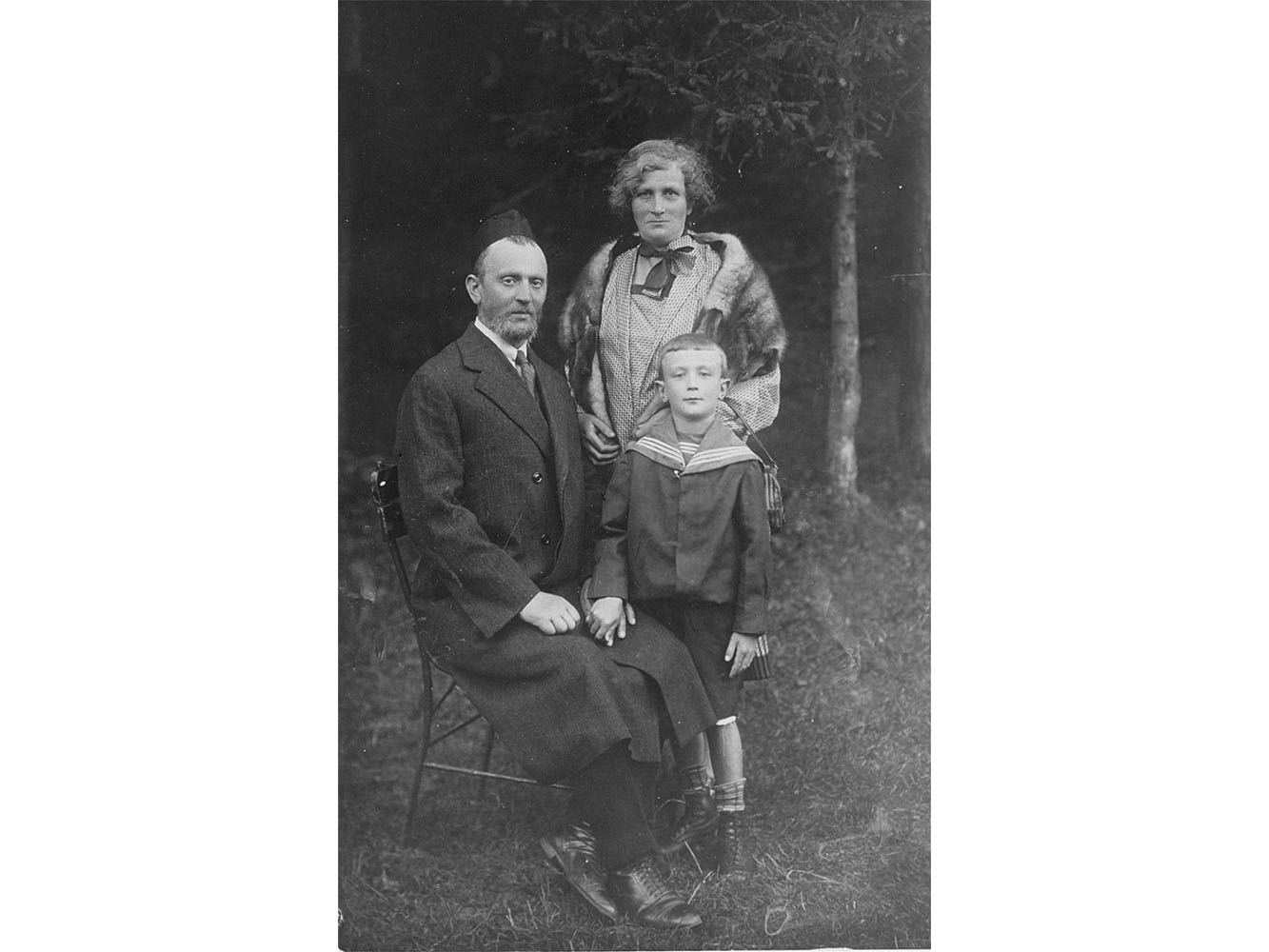
Jacob and Miriam Ringelheim pictured with their youngest son, Josef, in Przemysl, Poland, circa 1930. Jacob, a naturalized American citizen, returned to Poland in 1904 or 1905, married, and started a family shortly after. By the time Josef, their fourth child, was born in 1921 or 1922, they had three other children—two teenage sons who immigrated to the United States in 1924 and a daughter, Chaja.
Jacob owned a brick factory and several apartment houses, but Hilter’s rise to power was a great concern to him. He considered moving the family to the United States but found it difficult to liquidate his assets in Poland. Chaja married and moved to Italy, applied for an American passport, and immigrated to the United States in 1940. Her husband was killed near Przemysl in 1943, and her parents and youngest brother, Josef, were shot and killed in a mass execution in Sambor, in German-occupied Ukraine, in the same year. US Holocaust Memorial Museum, courtesy of Dr. Joan Ringelheim
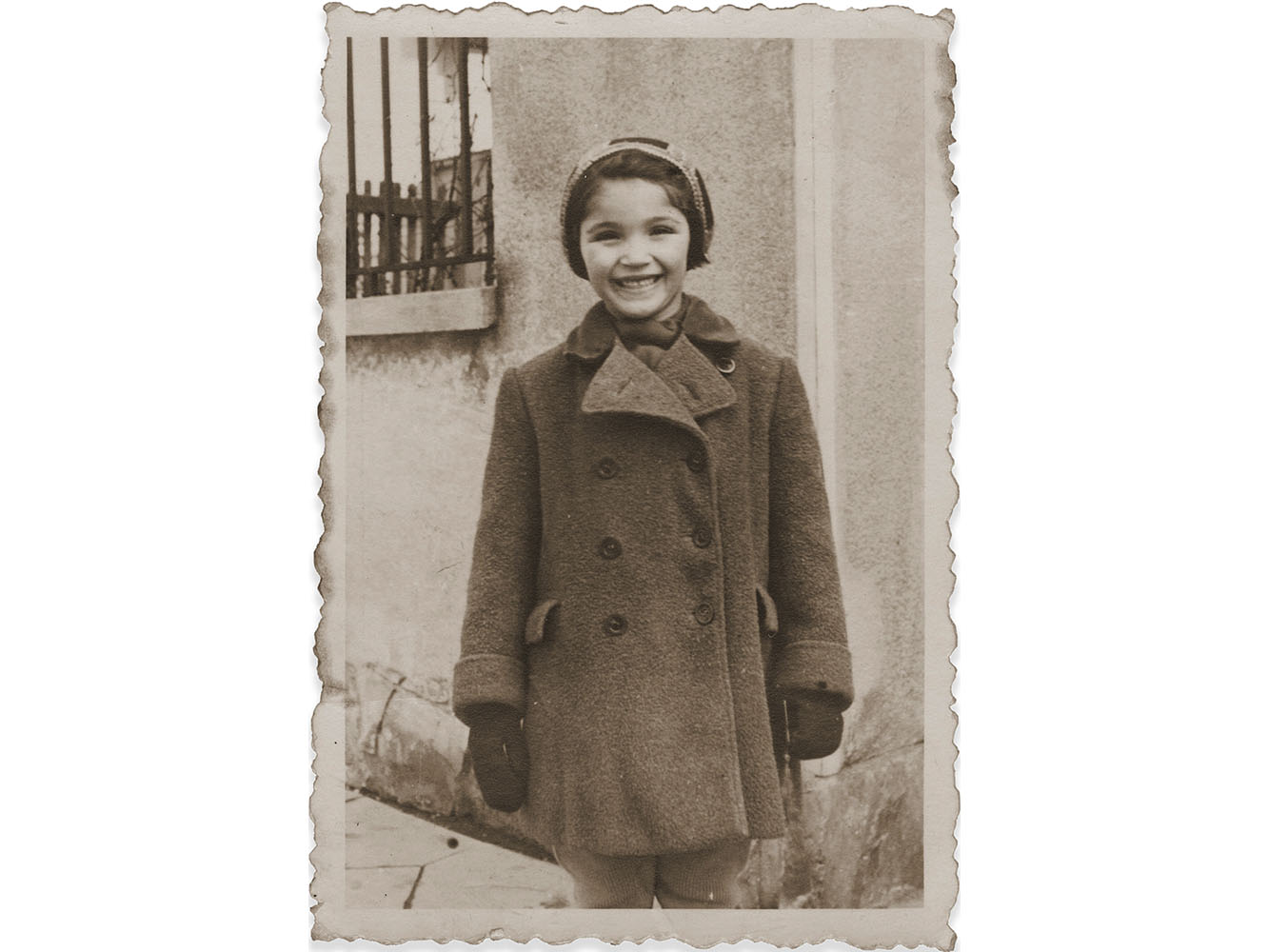
Eva Goldstein poses outside her home in Olomouc, Czechoslovakia, in March 1939. She and her brother, Michael, and their parents, Bohus and Wilma, were killed in the Holocaust. The photo was donated by Eva’s cousin Ruth Wottitzky Binder, who immigrated with her parents to the United States less than a month after this photo was taken.
Before the Holocaust, Eva and Ruth’s grandparents, Julius and Fanny Goldstein, lived in Sevetin, Czechoslovakia, owned a general store, and raised eight children. During the war, the whole family was deported to Theresienstadt and most were then sent to Auschwitz. Only Fanny and two of her children, Anna and Rudolf, survived the Holocaust. Rudolf then died from illness and malnutrition shortly after liberation. US Holocaust Memorial Museum, courtesy of Ruth Wottitzky Binder
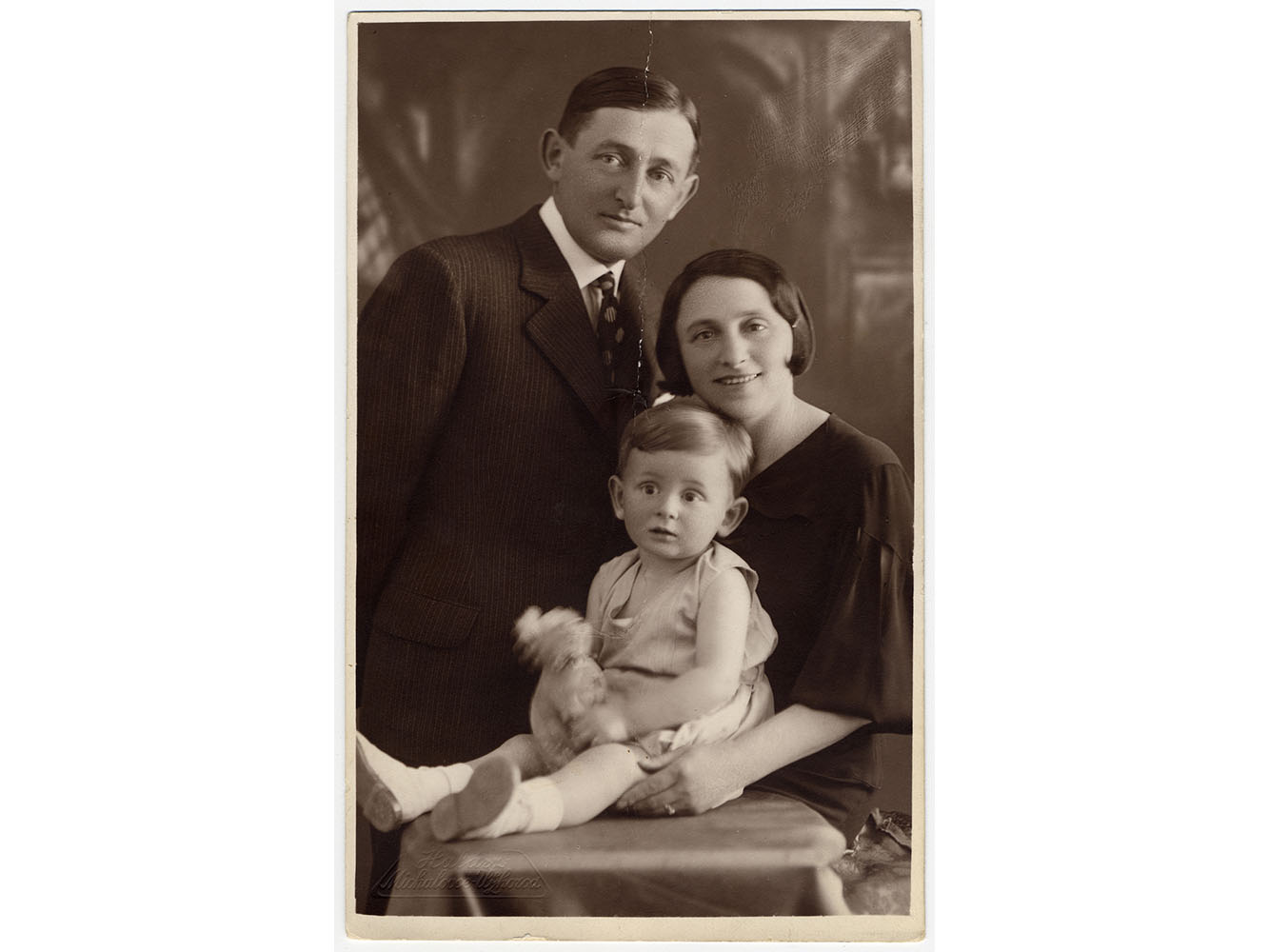
Moshe Brand and his wife, Etel, pose with their son, Richard, in Michalovce, Czechoslovakia, circa 1933–34. When the Slovak authorities confiscated Moshe’s furniture factory in 1941, the family secured false papers and sent their oldest son, Richard, then about nine years old, to a boarding school in Hungary. Three years later, the Nazis occupied Hungary, and the Brand family, worried for their son’s safety, dispatched a smuggler to fetch Richard from his school. The principal refused to release the boy, and by May 1944, the whole school was deported to Auschwitz-Birkenau, where Richard was murdered on arrival.
In January 1945, Etel Brand and her nine-year-old daughter, Agi, were deported to the Theresienstadt concentration camp, and Moshe was deported to Bergen-Belsen. Etel and Agi survived and returned to their home, where they found some valuables, including family photos, hidden in the double ceiling of their warehouse. On Agi’s tenth birthday, an unfamiliar, emaciated man greeted her. She didn’t recognize her father, who had survived the camp. US Holocaust Memorial Museum, courtesy of Hannah and Nissan Lowinger